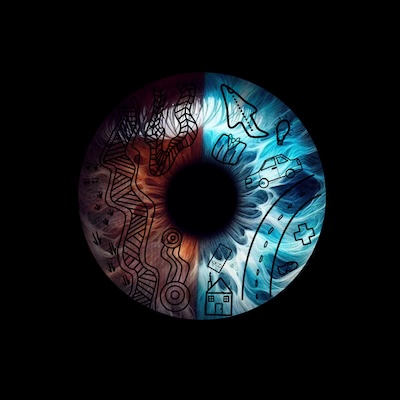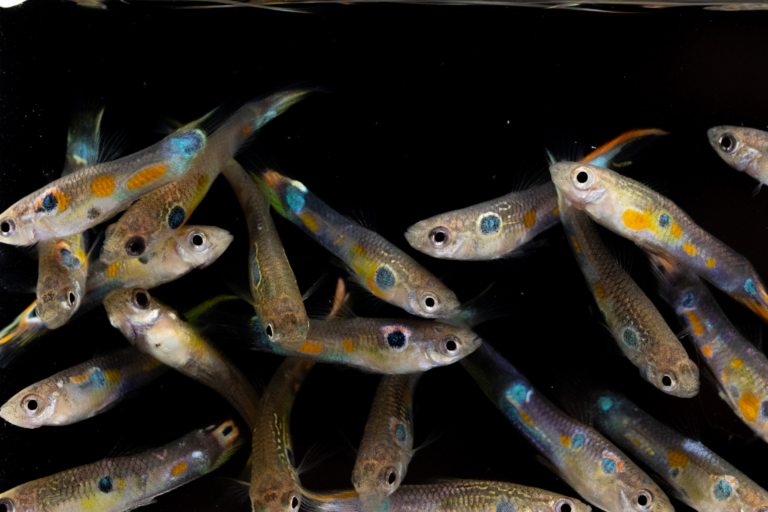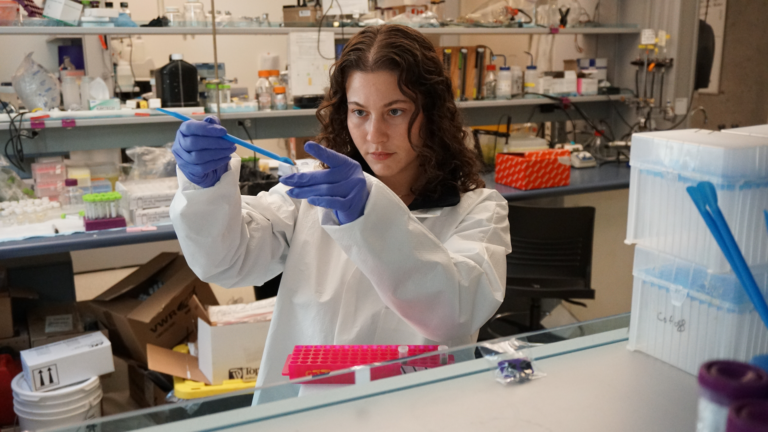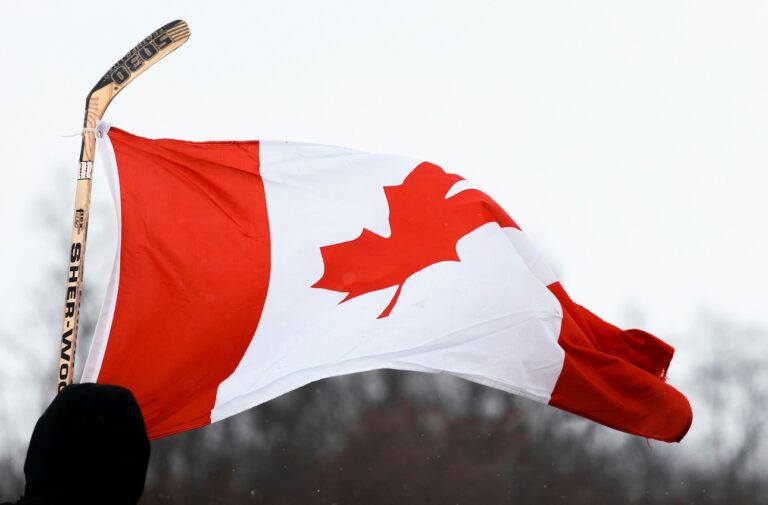Bringing Indigenous ways of knowing to neuroscience
University of B.C. researchers are working with Indigenous scholars and communities to bring Indigenous perspectives into brain science.

Dr. Melissa Perreault (centre left) and Dr. Judy Illes discuss Two Eyed Seeing in neuroscience with an audience at the Bill Reid Gallery of Northwest Coast Art in Vancouver during Brain Awareness Week in 2023. (Photo courtesy of Dr. Melissa Perreault)
University of B.C. researchers are working with Indigenous scholars and communities to bring Indigenous perspectives into brain science—hoping to open up new pathways for treating mental health and neurological conditions that are centered on collaboration, respect and self-determination.
In a paper published this week in Nature, Dr. Judy Illes, professor of neurology in UBC’s faculty of medicine and director of Neuroethics Canada, and Dr. Melissa Perreault, a member of the Métis Nation and an associate professor at the University of Guelph, explore approaches to integrating Indigenous knowledge with Western approaches in neuroscience. The paper is a product of the Crosscultural Working Group of the International Brain Initiative. It was also informed, in part, by the work of former UBC graduate student, Louise Harding.
We caught up with Dr. Perreault (MP), Dr. Illes (JI) and Harding (LH) to learn about how— and why— brain researchers are integrating Indigenous ways of knowing into their work.
Why is an Indigenous understanding of brain health important for neuroscience?
MP: In many Indigenous communities, our mental health is understood as being interconnected with other aspects of our being— with our spirituality and physical wellbeing, for example. If a medical doctor is treating an Indigenous person for a mental health disorder, they need to recognize how the spirituality and cultural traditions of Indigenous people can help in their healing process. It’s about thinking about the person as a whole and, Indigeneity aside, we should be doing that for everybody.
JI: The more knowledge we can learn about different ways of understanding, the better care we can offer people when they are affected by neurological and mental health issues.
LH: If we’re not working with Indigenous peoples in the context of colonization, of racism, of healing, of self-determination, then there’s a huge risk of perpetuating and doing additional harm to people. We can’t think about serving Indigenous populations without first considering how the way we’re doing research could be oppressive.
What does incorporating Indigenous ways of knowing into scientific research look like?
JI: When it comes to conducting research, this means engaging communities, with their values and knowledge, as full partners throughout the entire process. One example is the collaborative research we embarked on with the Tahltan First Nation in northern B.C., where a number of families have a unique genetic mutation associated with early-onset Alzheimer’s disease. Through long-term collaboration, we brought together our combined knowledges and understandings about the disease and the needs of the community, where intergenerational fractures occurred because of the history of the Residential School system. This also supported the co-creation of resources that are culturally relevant and meaningful to Tahltan communities.
MP: Communities really need to have a voice in the questions that are being asked in research. It’s important because Western views and Indigenous views—which themselves vary from community to community, culture to culture—might be completely different. For example, depending on the community, they may see a disability completely differently than we see it. That word may not even exist, or they might see it as a gift. It’s about listening and relationship-building, rather than coming in thinking that there is a problem that needs to be fixed.

In Canada, we have a term, Two-Eyed Seeing, which was coined by Mi’kmaw Elders Albert and Murdena Marshall. It means learning to see with the strengths of both Indigenous and Western knowledges and ways of knowing.
How can neuroscience better integrate a Two-Eyed Seeing approach?
JI: The key is partnership that embraces dual and multiple perspectives. It’s about honouring, respecting and appreciating different knowledge systems, definitions, values and priorities, and applying them authentically in research and care.
MP: It’s one thing to think about bringing Indigenous knowledge into neuroscience, but how do we even accomplish that when there are virtually no neuroscientists that are Indigenous? I think capacity-building is critical. There needs to be more support for building environments that Indigenous people can see themselves in.
LH: In working group discussions with Indigenous people for my master’s thesis, something that really came through was that Indigenous Peoples need the same level of access to new and high-tech treatment options as anyone else in the world. Everyone should have the opportunity to self-determine whether and how they integrate their Indigenous healing approaches with Western healing approaches. It’s up to Indigenous people, as individuals, to decide.
Interview language(s): English, French
Read the full interview with Dr. Perreault, Dr. Illes and Louise Harding in Pathways—the UBC faculty of medicine’s digital magazine.
CONTACT
JOURNALIST RESOURCES
Journal article: “Two-Eyed Seeing and other Indigenous perspectives for neuroscience”



